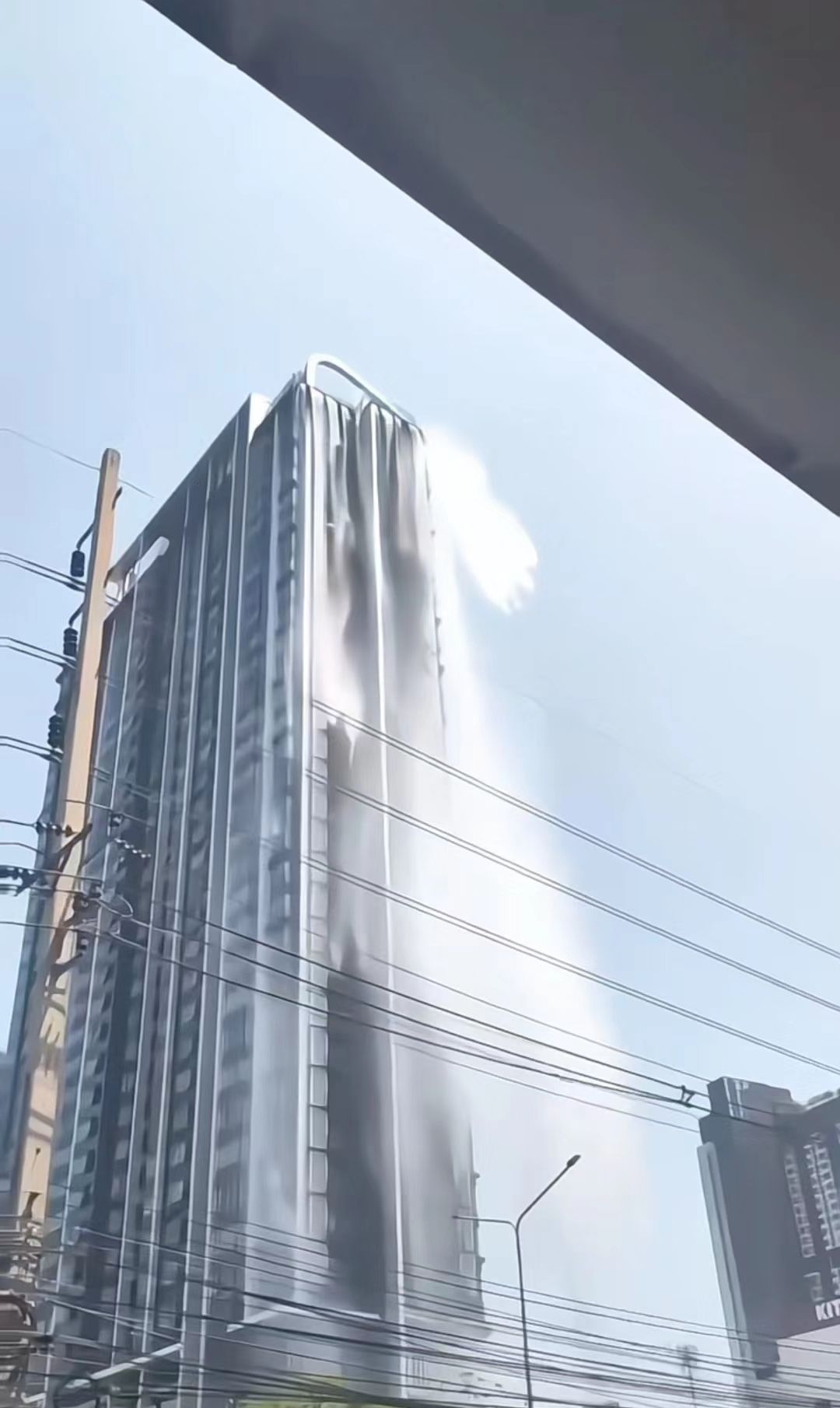March 28 Thailand Earthquake
2025-03-29
On March 28, 2025, a powerful earthquake shook Southeast Asia, causing strong tremors across Thailand. Although the epicenter was located in the Sagaing Region of Myanmar, the 7.7-magnitude quake severely impacted Bangkok and surrounding cities, leading to building collapses, transportation disruptions, and widespread panic. This disaster has become one of the most significant natural catastrophes of the year.
A Devastated Landscape
Many regions in Thailand experienced violent shaking, especially in the capital, Bangkok, which felt as if it were being rocked by an invisible force. Skyscrapers that once stood tall and firm trembled like fragile stacks of blocks under the seismic waves. Inside the buildings, people were thrown into chaos—files and objects crashed to the ground, lights flickered ominously, and fear gripped the air.
On the streets, pedestrians ran frantically in all directions. Some screamed in terror, their voices filled with helplessness, while others collapsed in shock, their faces reflecting despair. Some were separated from their companions, desperately calling out names in an attempt to reunite. Car alarms blared incessantly, adding to the cacophony of panic.
Construction sites in Bangkok were hit even harder. Unfinished high-rise buildings crumbled, sending massive clouds of dust into the sky as if signaling the apocalypse. Workers, caught off guard, scrambled for safety, while some who reacted too slowly were buried under the debris, their fate uncertain.
At the 46th Bangkok International Motor Show, held at the Thailand Impact Exhibition Center, the earthquake caused widespread chaos among the estimated 70,000 attendees, including exhibitors, sales representatives, and visitors. The tremors sparked a stampede toward emergency exits, creating a high risk of trampling accidents.
Beyond endangering lives, the earthquake also dealt a severe blow to Thailand's infrastructure. Internet and mobile services became unreliable, leaving people unable to communicate with loved ones or seek help. Bangkok's metro and light rail services were suspended, leading to massive traffic congestion, with vehicles forming endless lines that barely moved.

Rescue Efforts: A Race Against Time
In response to this catastrophe, the Thai government acted swiftly. Prime Minister Paetongtarn immediately cut short her inspection visit in Phuket and rushed back to Bangkok to convene an emergency disaster relief meeting. With a solemn expression and a firm tone, she directed key government departments to prioritize saving lives and mitigating damage.
The Ministry of Defense also mobilized troops to maintain public safety. Their presence reassured the frightened citizens. Soldiers, dressed in full gear, efficiently carried out rescue operations—some assisted in evacuations, guiding people to safety, while others transported relief supplies tirelessly. Sweat soaked their uniforms, but they pressed on without complaint.
Meanwhile, the Bangkok city government declared a state of emergency, implementing traffic controls to facilitate rescue operations. Police officers directed vehicles on the streets, ensuring that ambulances and relief teams could move freely. Though these restrictions inconvenienced daily life, residents cooperated fully, understanding the critical importance of keeping emergency routes open.
To provide shelter for the displaced, Bangkok's parks remained open throughout the night of March 28. Rows of tents turned the open spaces into makeshift refugee camps, where volunteers distributed food, drinking water, and blankets. Although exhaustion and anxiety were evident on people's faces, the comforting presence of aid workers gradually restored a sense of calm. Children played inside the tents, their laughter offering a rare moment of warmth amid the devastation.
Rescue teams worked tirelessly to locate survivors trapped under rubble. At various disaster sites in Bangkok, trained professionals in specialized gear meticulously searched through the debris, listening for faint cries for help. Each time they detected signs of life, their eyes lit up with renewed determination, intensifying their rescue efforts.
International aid also poured in. The United Nations Disaster Assessment team quickly coordinated with the Thai government to provide assistance. Neighboring countries, including China and Myanmar, expressed their willingness to offer support in coping with the crisis.
Lingering Impact and Challenges Ahead
The earthquake's effects extend far beyond immediate destruction. Thailand's economy has taken a significant hit. The Stock Exchange of Thailand suspended all trading activities in response to the quake, bringing a sudden halt to transactions across the main board, startup board, and futures markets. This unexpected disruption sent shockwaves through the financial sector, leaving investors uncertain about the market's stability.
Thailand's tourism industry—one of the country's economic pillars—also suffered major setbacks. Known for its stunning landscapes, rich cultural heritage, and world-famous cuisine, Thailand has long been a top travel destination. However, the earthquake has raised safety concerns among tourists, prompting many to cancel or reconsider their trips.
Beyond economic repercussions, the psychological impact on residents is profound. Many remain traumatized, fearing aftershocks and struggling to regain a sense of security.
Global Cooperation in Times of Crisis
In today's interconnected world, natural disasters are no longer isolated events—they pose challenges to the entire international community. The Thailand earthquake underscores the importance of global solidarity in disaster response.
Following the quake, countries quickly offered aid, demonstrating humanitarian values and the power of international cooperation. The Chinese Blue Sky Rescue Team's rapid deployment not only reflected China's commitment to global disaster relief but also highlighted the deep friendship between China and Thailand. Equipped with cutting-edge rescue technology, these teams provided crucial assistance to Thai emergency workers, enhancing the effectiveness of relief efforts.
In addition to rescue operations, the global community contributed by donating essential supplies, including tents, food, water, and medical kits, ensuring that affected individuals received basic necessities. Several nations also sent technical experts to support Thailand in seismic monitoring and disaster assessment, laying the groundwork for future recovery efforts.
Safety Guidelines for Earthquakes
- Indoor safety: Take cover immediately, protect your head with a cushion, and stay away from windows and hanging objects.
- Emergency supplies: Keep a flashlight, whistle, and a three day supply of water and medication at home.
- Information updates: Follow Thailand's National Broadcasting Services (NBT) or the Thai Meteorological Department (TMD) for real-time updates.
- Aftershock precautions: The first 48 hours after a quake are high risk—avoid returning to damaged buildings.
Conclusion
This earthquake is not just a test of Thailand's emergency response system; it is a stark reminder that no place is entirely safe from the forces of nature. Perhaps the most effective defense against earthquakes begins with structurally sound buildings, well-practiced emergency drills, and an unwavering respect for human life.
May the departed rest in peace, and may the survivors find strength to rebuild.




